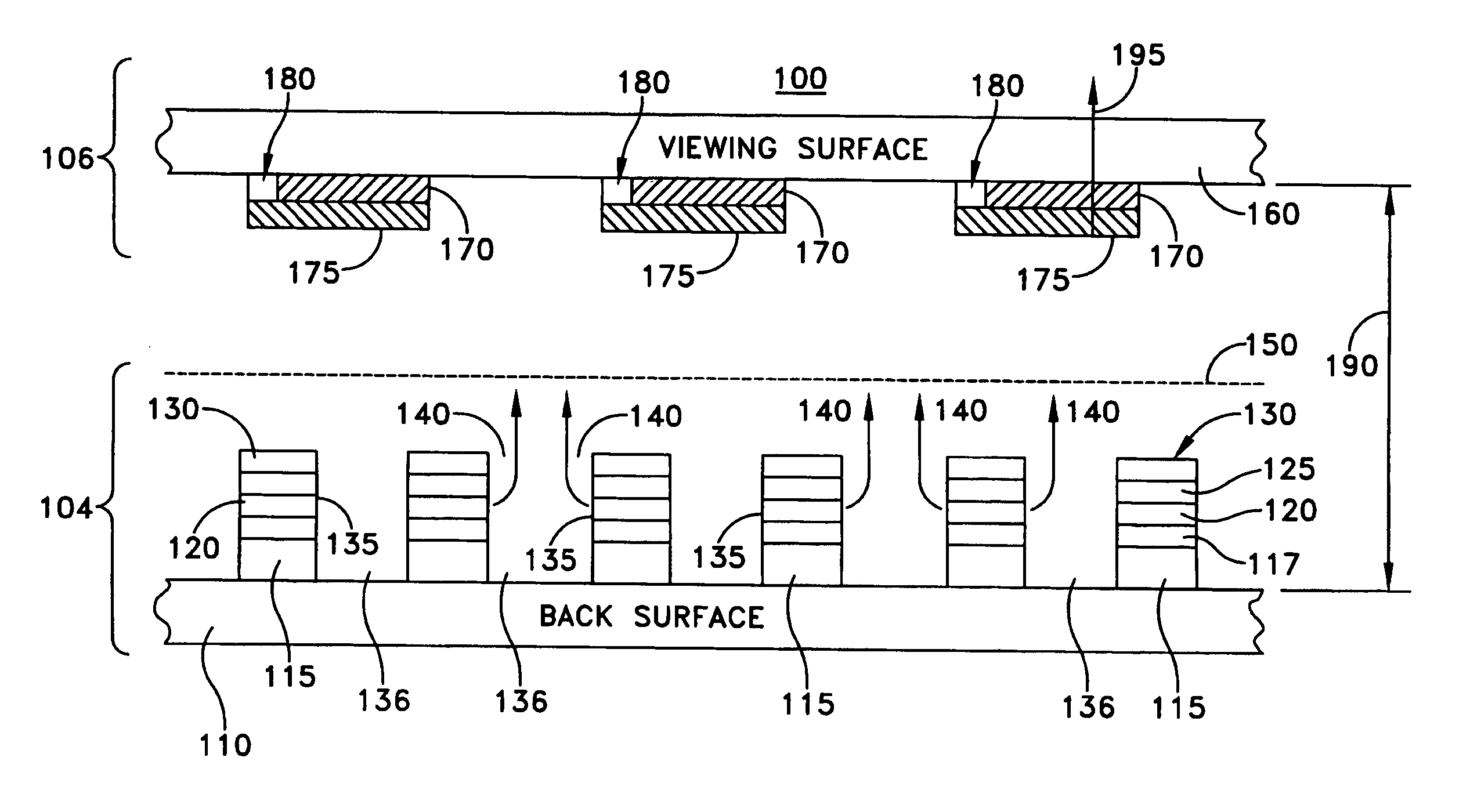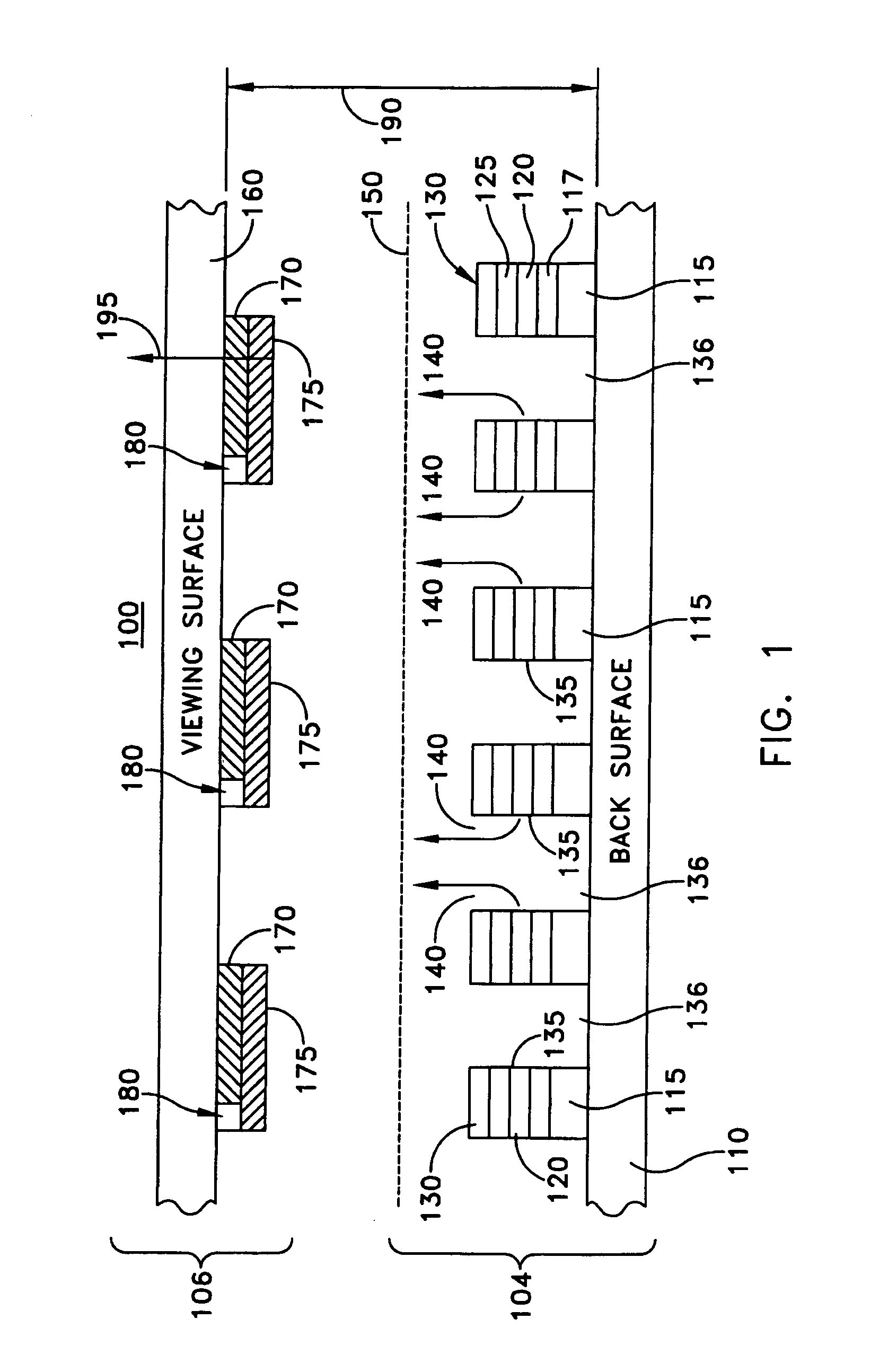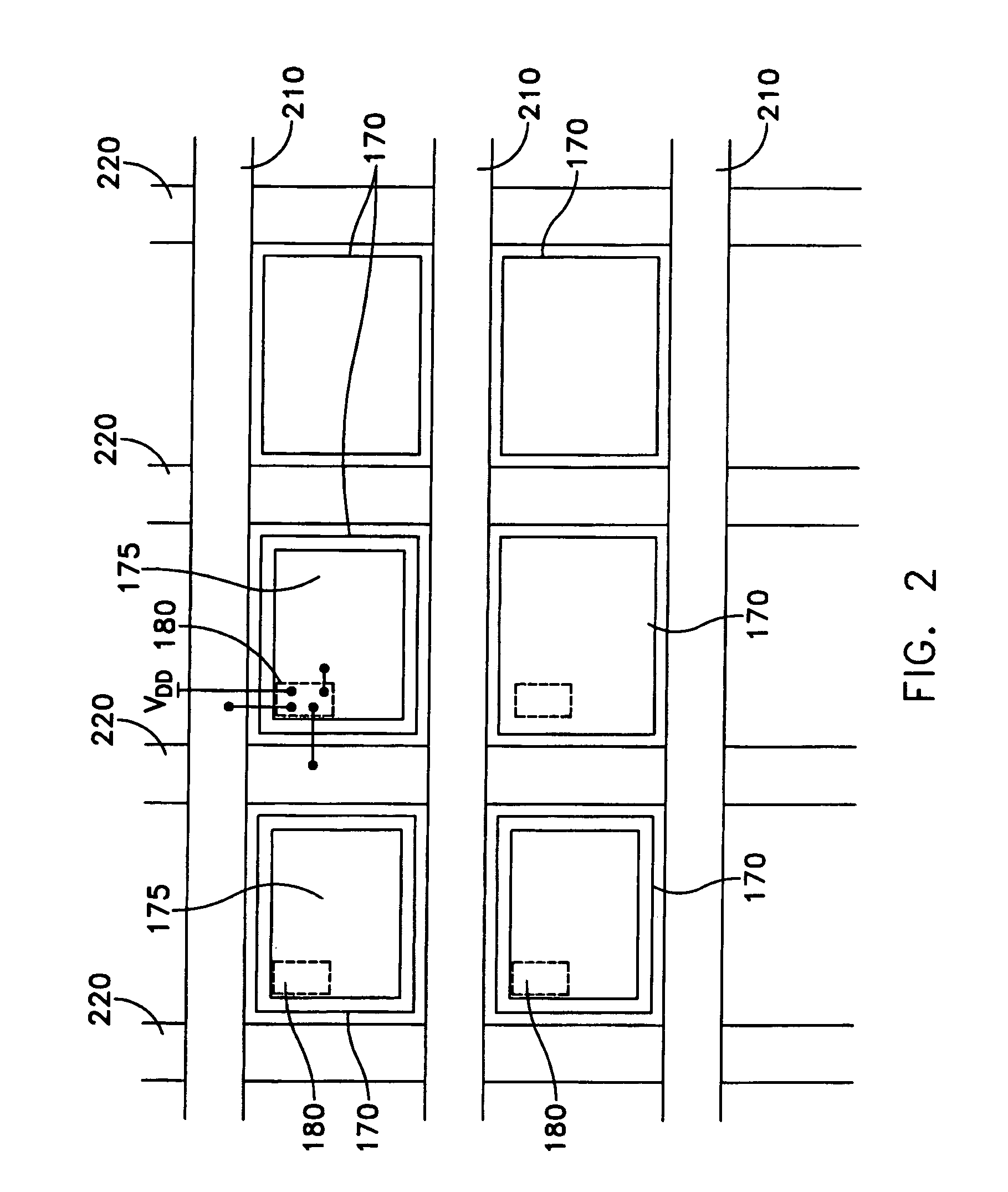Hybrid active matrix thin-film transistor display
- Summary
- Abstract
- Description
- Claims
- Application Information
AI Technical Summary
Problems solved by technology
Method used
Image
Examples
second embodiment
[0061]FIG. 4 illustrates the display. In this embodiment, the TFT anode structure shown in FIG. 2 is deposited on substrate 110. In this case, a material such as poly-silicon or amorphone silicon, may be deposited on substrate 110, that allows for the fabrication of row lines 210 (not shown), column lines 220 (not shown), conductive pad 170 and TFT circuit 180 onto substrate 110 in row / column matrix as shown in FIG. 2. Phosphor layer 175 may then be deposited on corresponding conductive pads 170.
[0062] In one aspect a silicon (Si) single crystal wafer may be used for the active matrix circuitry, wherein the Si wafer is attached to a glass substrate. In this case, the phosphor pads are also made on the Si wafer.
[0063] Cathode 104 is fabricated on viewing surface 160 and emitter layer 120 and conductive layer 130 operate to draw electrons from edges 135 of emitter layer 120. Emitter layer 120 and conductive layer 130 occupy a significantly small portion of the viewing glass area to a...
first embodiment
[0076] Alternatively, referring now also to FIGS. 13A-14, TFT circuits 180 may include an amplification stage (FIGS. 13A-13C) and a pixel circuit stage (FIG. 14). a schematic circuit representation of a TFT amplification stage 1300A suitable for use in display 1100 of FIG. 11 is shown in FIG. 13A. Stage 1300A may be characterized as a two n-channel transistor configuration. Stage 1300A includes a first n-channel transistor M1 having gate and drain terminals coupled to a known voltage such as Vdd or about +40V. A source terminal of transistor M1 is coupled to a drain terminal of a second n-channel transistor M2 and an input for the pixel circuit stage. A gate terminal of transistor M2 may have a column driver data signal, such as a 0-5V signal, provided thereon. A source terminal of transistor M2 may have another known voltage VTH, such as about 3 to about 5 volts, provided thereon.
[0077] According to a second embodiment, a schematic circuit representation of a TFT amplification sta...
third embodiment
[0078] a schematic circuit representation of a TFT amplification stage 1300C suitable for use in the display 1100 of FIG. 11 is shown in FIG. 13C. Stage 1300C may be characterized as a one p-channel, two n-channel transistor configuration. In operation, stage 1300C may serve to increase a realized output swing and power efficiency. Stage 1300C includes a p-channel transistor M1 having a source terminal coupled to a known voltage such as Vdd or about +40V. A gate terminal of transistor M1 may be provided with another known voltage V1, such as a voltage of about 36 or 37 volts, or a voltage less than about 40 volts. A drain terminal of transistor M1 is coupled to a drain terminal of a first n-channel transistor M2 and an input for the pixel circuit stage. A gate terminal of transistor M2 may have a column driver data signal, such as a 0-5V signal, provided thereon. A source terminal of transistor M2 may have another known voltage VTH provided thereon. A second n-channel transistor M5...
PUM
 Login to view more
Login to view more Abstract
Description
Claims
Application Information
 Login to view more
Login to view more - R&D Engineer
- R&D Manager
- IP Professional
- Industry Leading Data Capabilities
- Powerful AI technology
- Patent DNA Extraction
Browse by: Latest US Patents, China's latest patents, Technical Efficacy Thesaurus, Application Domain, Technology Topic.
© 2024 PatSnap. All rights reserved.Legal|Privacy policy|Modern Slavery Act Transparency Statement|Sitemap



